Fire season is upon us. That’s not news to anyone living in the western US. But feeling it, living it, became a new reality for me last week. I live in Flagstaff, Arizona, where the city has a “Ready, Set, Go” system in place to help deal with the threat of wildland fire. When the Rafael Fire started earlier this summer, I and many residents were notified that we were in “Set” or pre-evacuation. Luckily, I didn’t have to evacuate, but it was still a trying circumstance. When the first email notification came in, I froze for a moment, then clocked out of my summer NFF Conservation Connect Fellowship, texted my sisters, and proceeded into the unknown.
The following is an outtake of my interaction with family and friends via texts and Facebook posts, a first-hand encounter with an oncoming wildfire.
June 21
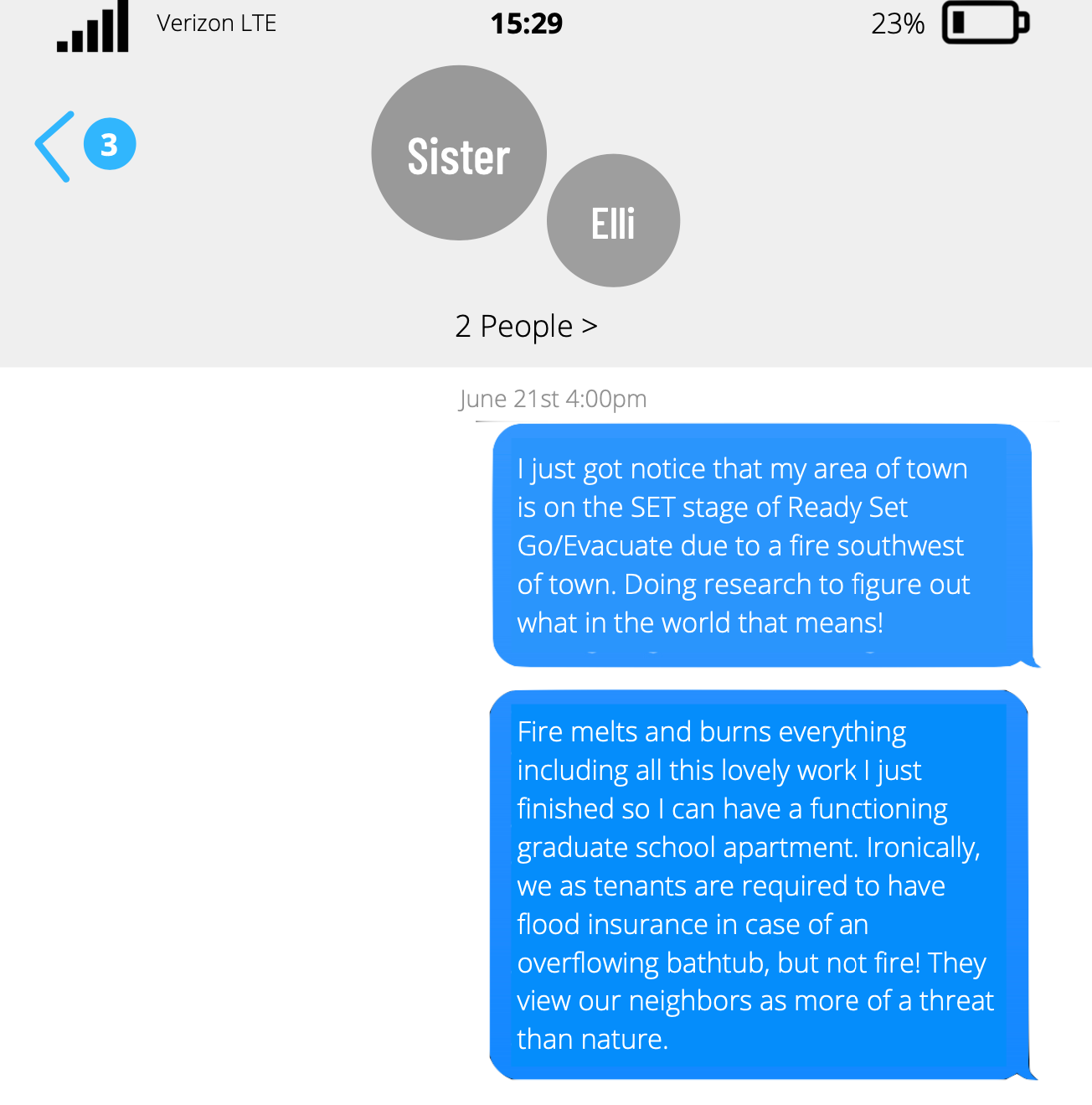
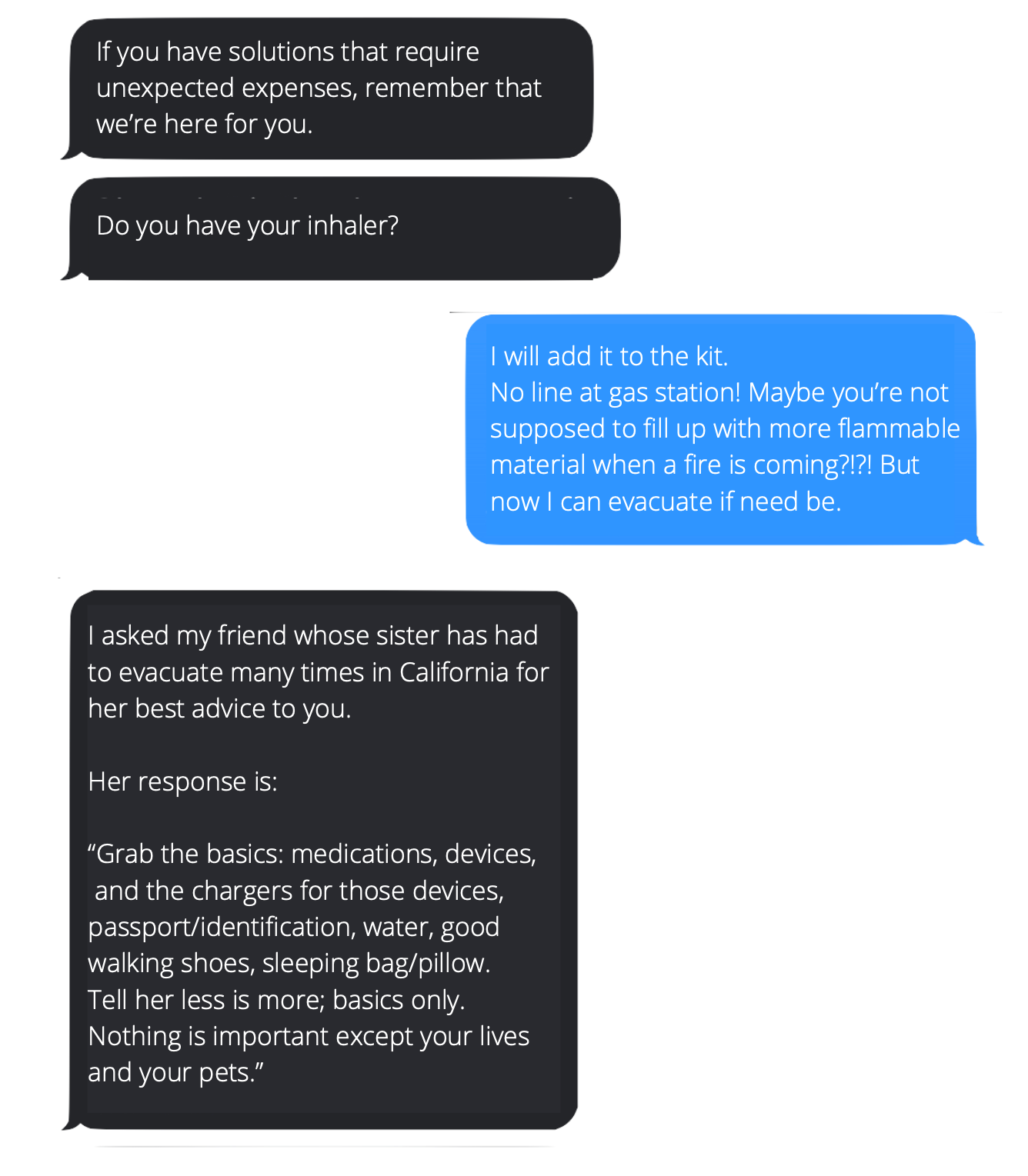
Text conversation with sister.
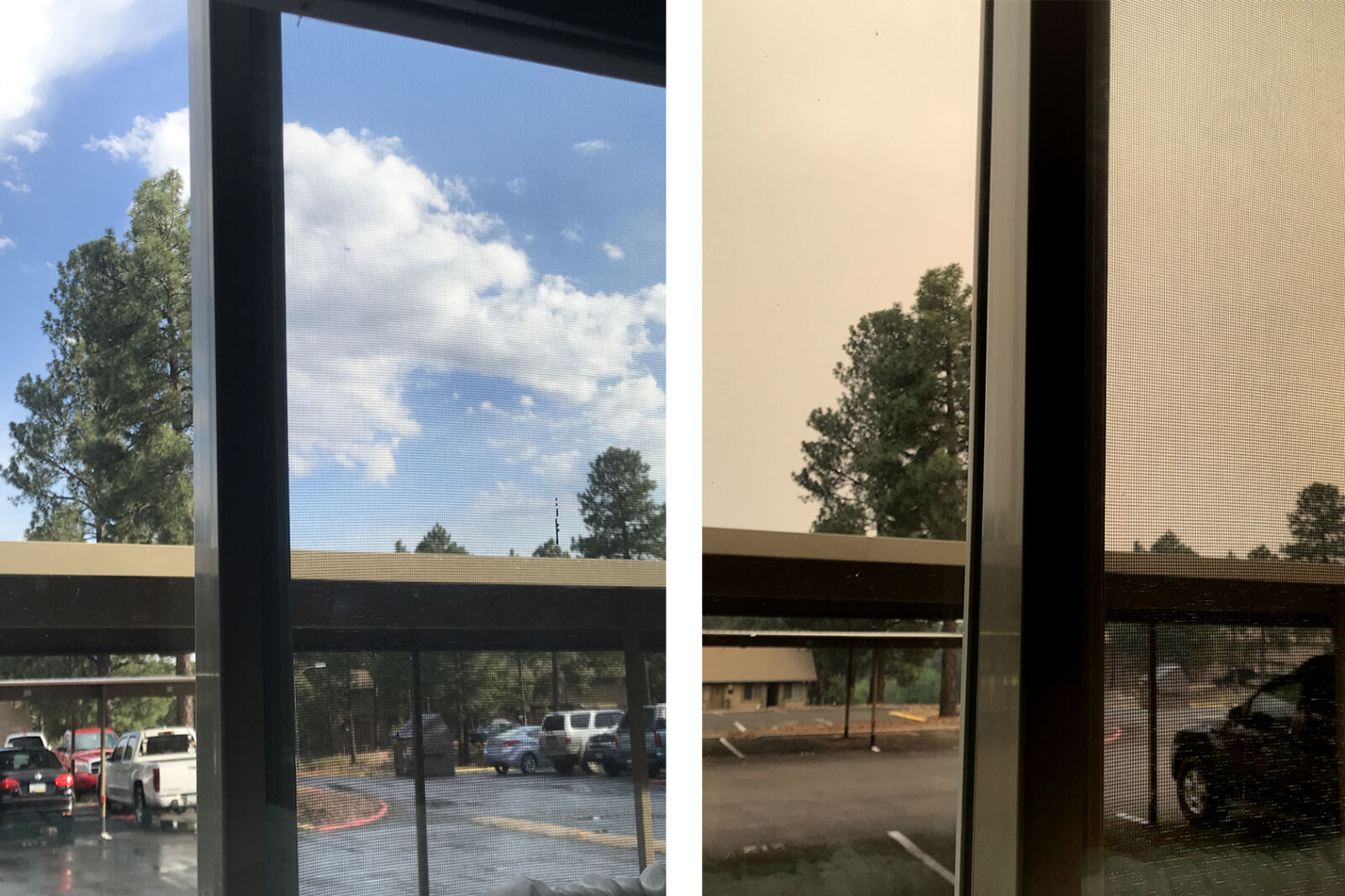
The typical western US blue sky turned a scary yellow, so thick with smoke that the mountains became totally obscured.
June 22
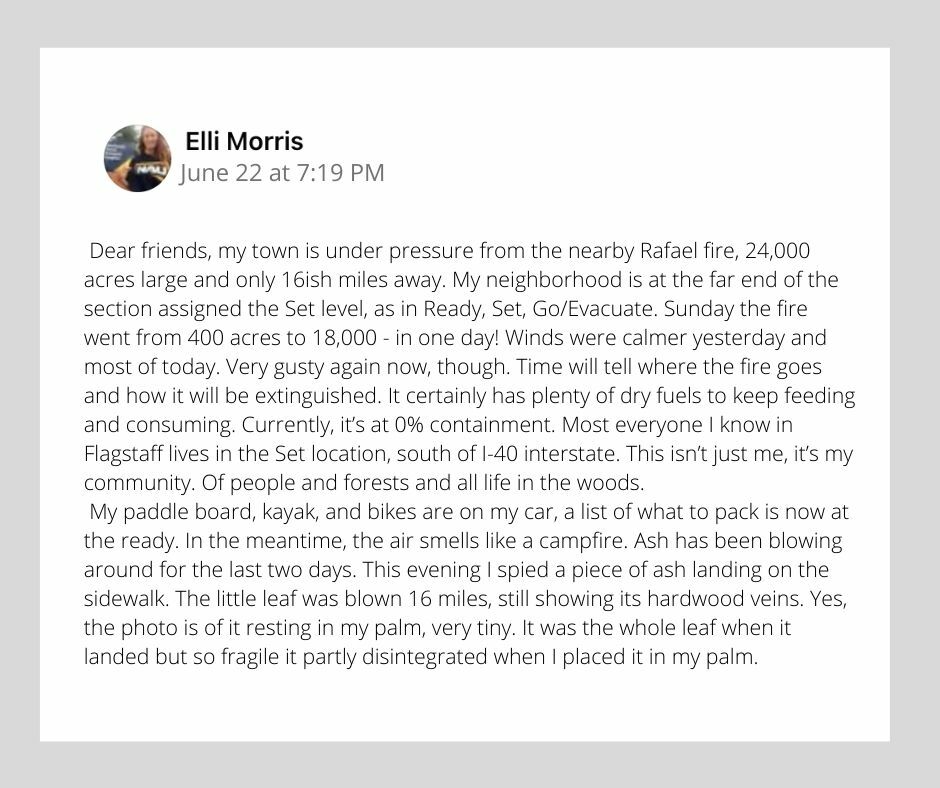
Facebook Post on June 22nd.
Resting in my palm is a tiny leaf of ash, still showing its hardwood veins, blown from the fire 16 miles away.
June 23
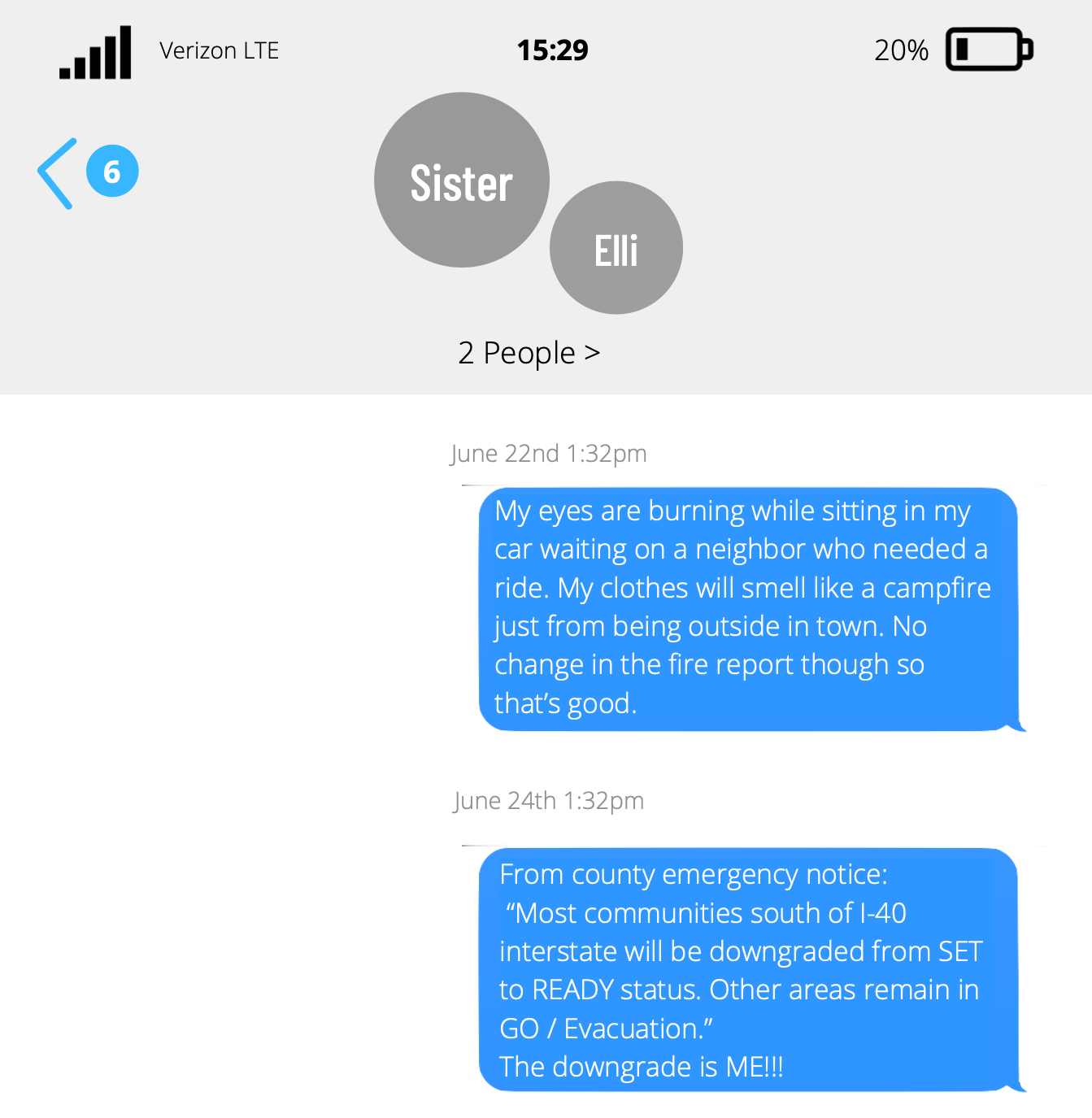
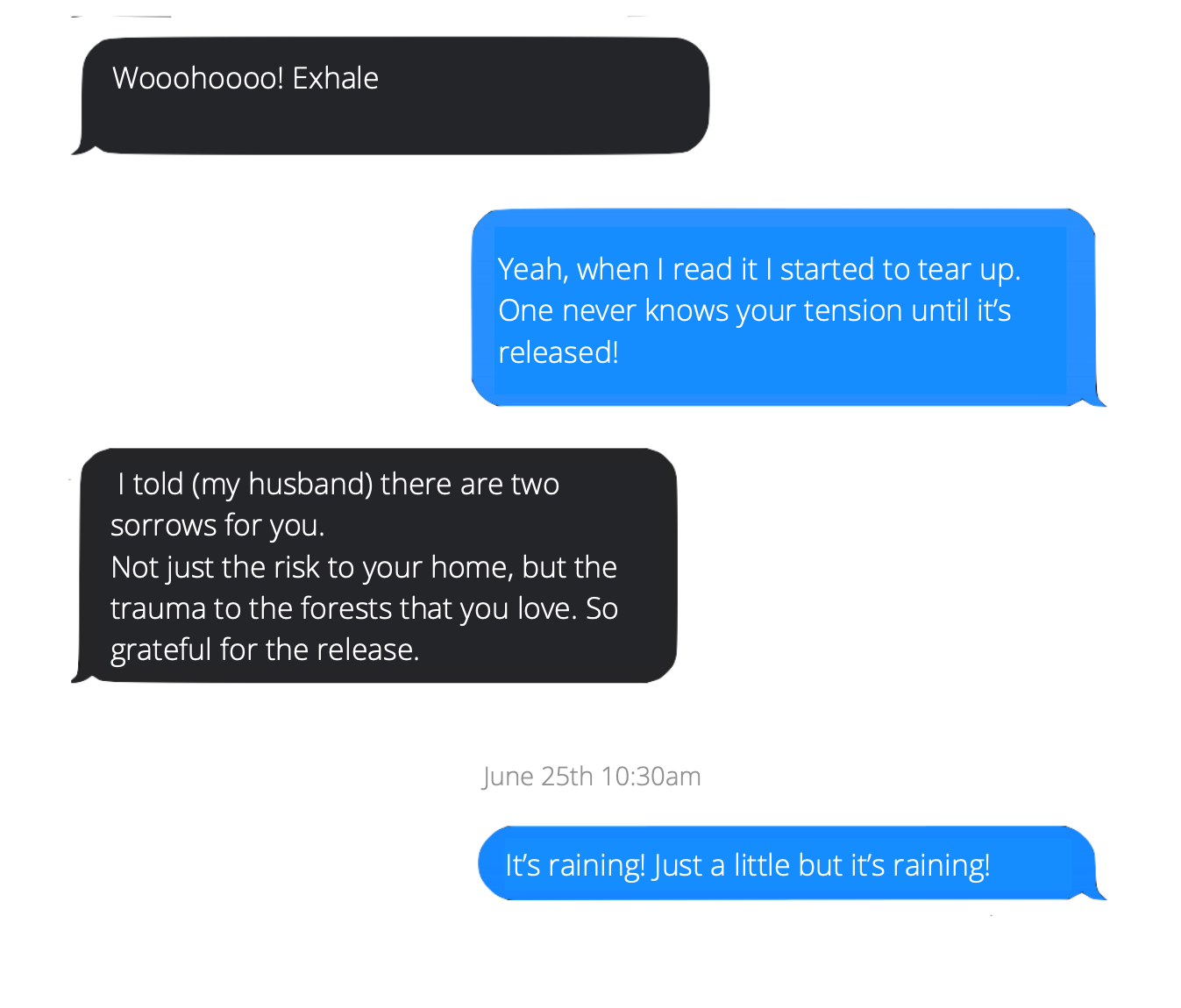
Text conversation with sister.
June 25
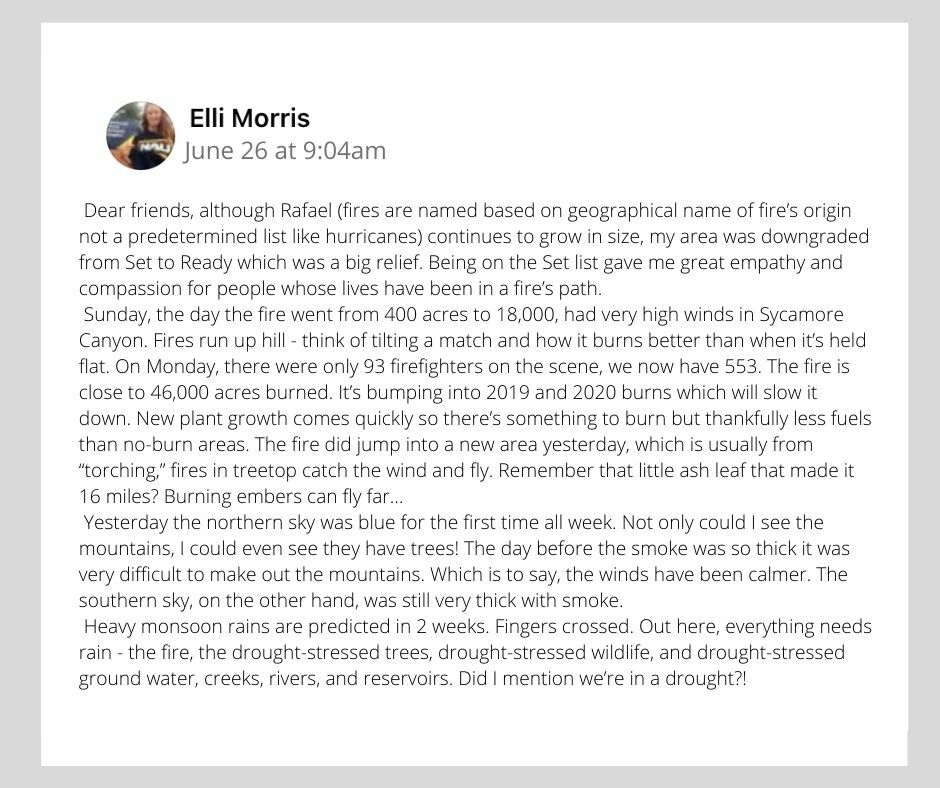
Facebook Post
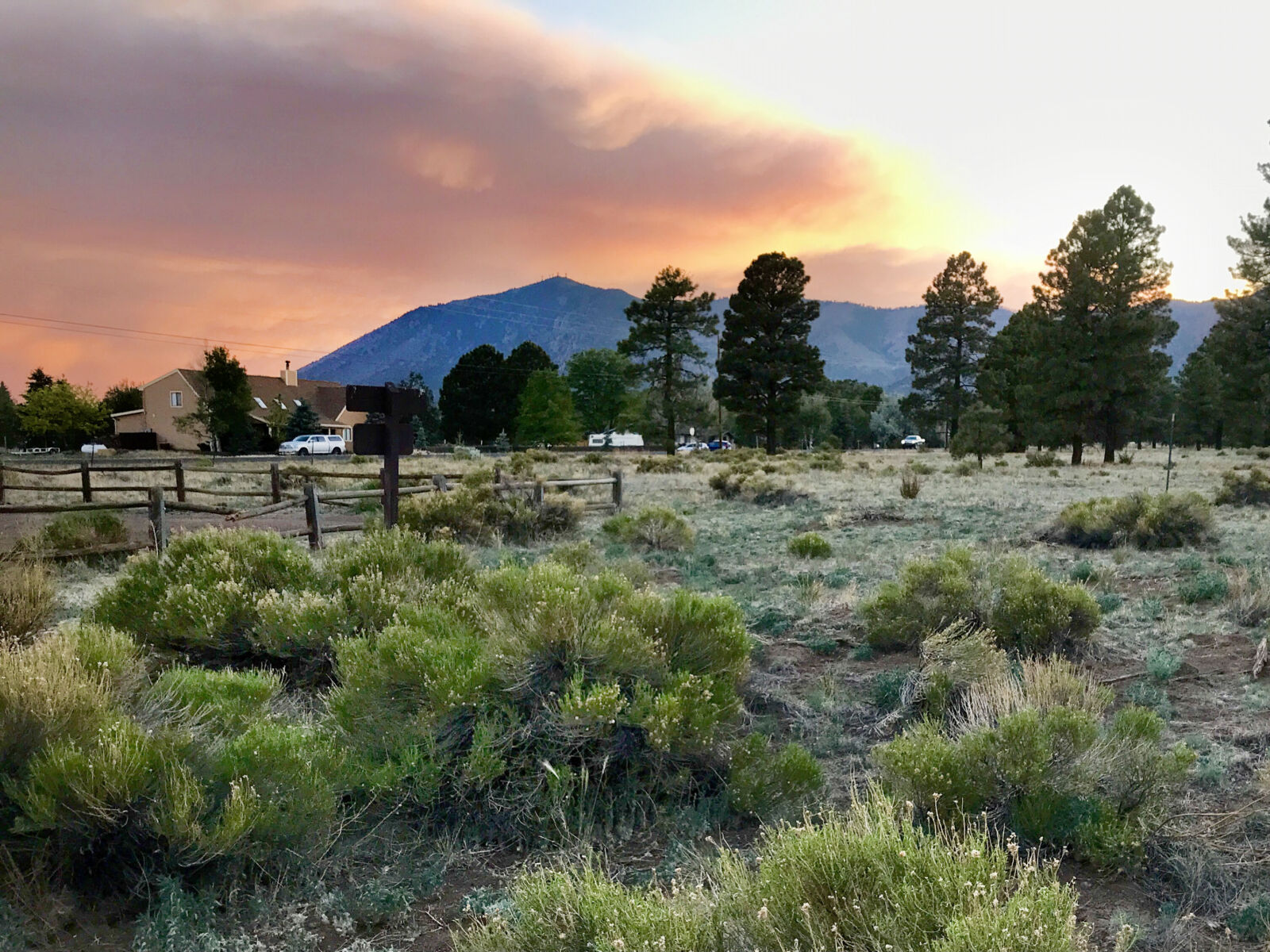
What I thought was simply a vibrant summer sunset turned out to be the forests going up in smoke, 400 acres to 18,000 that day.
June 27
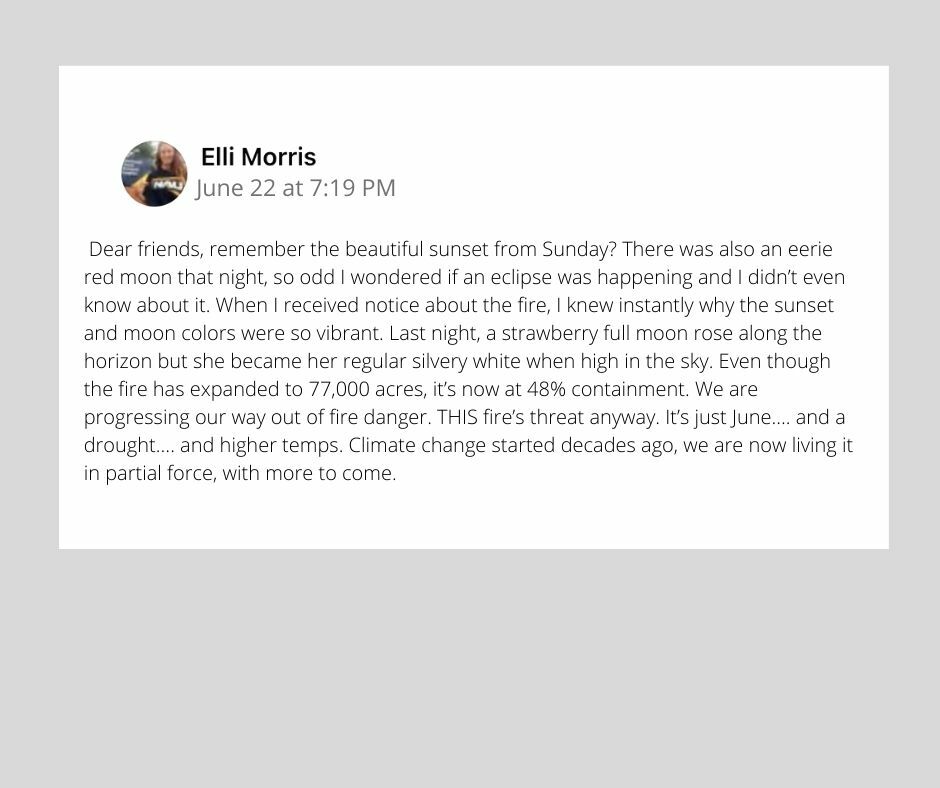
We get so caught up in headlines about “the driest,” “the worst,” “the biggest.” Those records don’t hold a candle to having to narrow down your life into a few boxes that can fit inside your car. I'm thankful I didn't have to experience a catastrophe in order to have a more empathetic heart for those who have lived in the path of natural devastation. I’m also thankful that I learned about the simple, easy-to-understand fire preparedness lingo. Most of the American west now lives in a prepared state of fire readiness but it’s still very daunting to go from Ready to Set. Yet I cannot imagine what it’s like for those who are told to Go.

